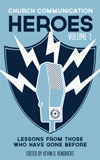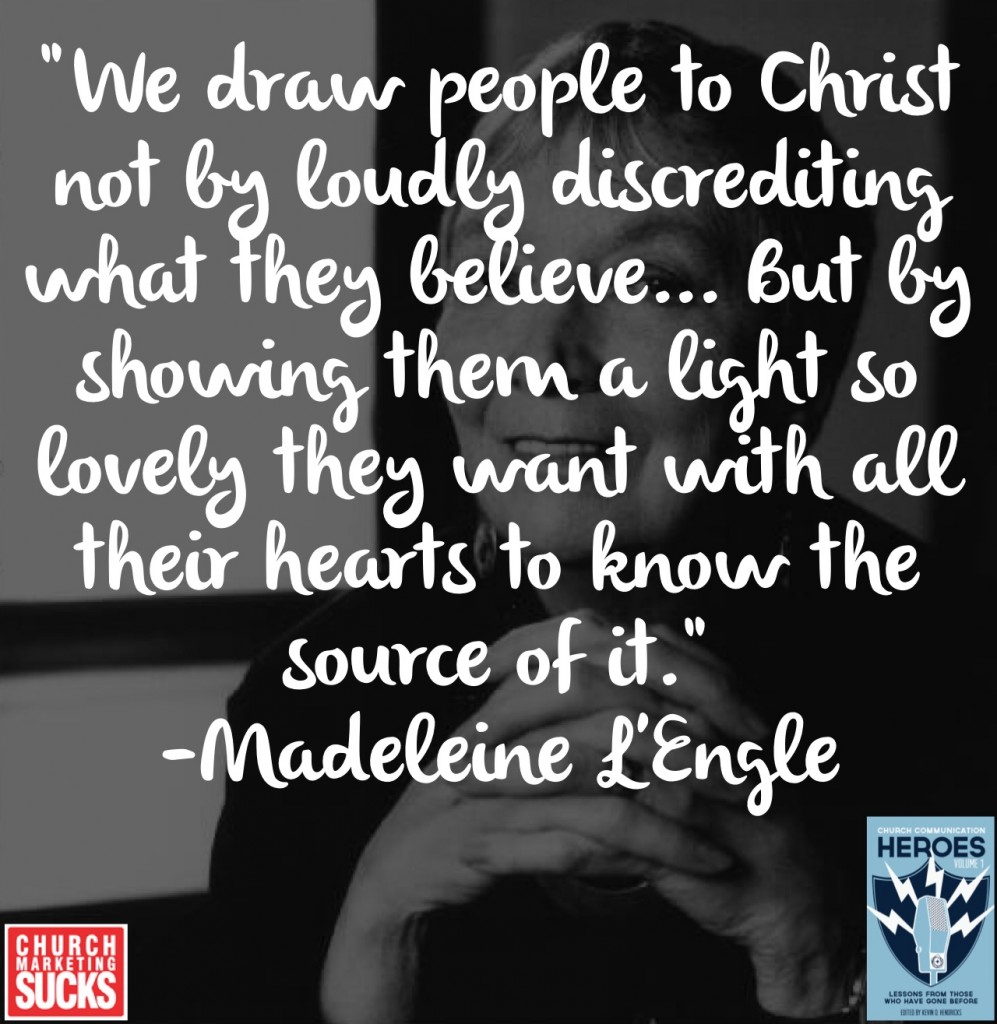J.R.R. Tolkien and C.S. Lewis get all the credit as the primary Christian authors of the 20th century. But Madeleine L’Engle (1918-2007) was just as prolific (if not more so, with over 60 published titles), had a beloved children’s series of her own and embraced one of the primary challenges to the church—science—and paired it rather audaciously with faith. This is perhaps what sets L’Engle apart: While the heroes of Tolkien and Lewis were elves, dwarves and talking animals, L’Engle’s heroes were scientists and angels.
Could you ask for a better hero of the church?
Yes, how about one who worked in the church? L’Engle did, as a choir director.
While Lewis’ strength is in his apologetics, L’Engle’s is in her doubt. She even served in a church in part because of her lack of faith. Like you, she worked in a church and understands our unique problems.
Reality vs. Excellence
She tackled a second-rate choir and struggled with that yearning for excellence in the face of reality. In the end she learned the value of people (a lesson seen repeatedly in our Getting Started series):
If the choir was to be a success, the obvious first thing to do was to ease out some of the problem voices. I couldn’t do it. I don’t know why, but something told me that every single person in that choir was more important than the music. “But the music is going to be terrible,” I wailed to this invisible voice. “That doesn’t matter. That’s not the reason for this choir.” I didn’t ask what was, but struggled along. The extraordinary, lovely thing was that the music got to be pretty good, far better, I am now convinced, than it would have been if I’d put the music first and the people second. (A Circle of Quiet)
Gossip
Later she would face the ultimate—and most common—indignity of working in a church: Resigning over unfounded accusations. She and several others were accused of being communists, no light threat in the 1950s era of McCarthyism. The group opted to resign unanimously, but thankfully justice won out: “The deacons tore up our resignation.”
Walking on Water
“We are all asked to do more than we can do,” L’Engle tells us in Walking on Water. “Every hero and heroine of the Bible does more than he would have thought it possible to do, from Gideon to Esther to Mary.” L’Engle talks at length about the creative process, how it is an incarnational activity—like walking on water, which is the title of her incredible reflection on faith and art. I underlined half the book and could fill this entire post with her quotes.
But I think it’s enough to say that she understood the mystery of our faith and how artists are the ones with the childlike vision to required to communicate it best.
We Are All Marketers
L’Engle’s break out novel, A Wrinkle in Time, was rejected by at least 30 publishers (it recently became a graphic novel). It was (and is) a difficult book for adults, so the publisher opted to market it to children. It won the Newbery Award for children’s literature, instantly labeling L’Engle a children’s author. But it didn’t stop there. The Christian themes in her work branded her a Christian children’s author.
She resisted all these labels: “I’m a writer. That’s enough of a definition.”
We are all communicators and marketers, whether we have that title or not. It is not the title that makes us communicators. It is who we are, as pastors, assistants, managers, videographers, sound techs, etc. You communicate regardless of your title. Don’t let that title limit your work.
Why, Why, Why?
There’s a tendency in the church to go with the flow. To accept things as they are and not question authority. Of course that’s disrupted by every obnoxious youth group member. As it should be. It should also be upset by the communicators.
Communicators must always be questioning. What are we trying to say or how will this be accomplished? Sometimes those questions can get uncomfortable. How does this fit with our mission or why are we doing this? It’s enough to make a pastor bristle.
L’Engle embraced the art of asking questions: “It is all right to be like the small child who constantly asks: Why? Why? Why?”
Show Don’t Tell
Perhaps best of all, L’Engle embodied the greatest writing advice, show don’t tell:
“We draw people to Christ not by loudly discrediting what they believe, by telling them how wrong they are and how right we are, but by showing them a light that is so lovely that they want with all their hearts to know the source of it.”
It’s no accident that this is also great advice for living. This is why I think true marketers have more in common with artists than preachers. If we attempt to communicate our faith with debates and proclamations, we will often fail. But if we show them, if we live it for them, then will they truly see.
(Unless otherwise noted, quotes taken from Walking on Water: Reflections on Faith and Art. Like I said, I underlined half the book. Go read it. Now.)
 More:
More:
- Learn more about heroes in our ebook, Church Communication Heroes Volume 1: Lessons From Those Who Have Gone Before.
- Read our review of Walking on Water: Reflections on Faith and Art.
-
Check out other heroes in our Church Communication Heroes series.






Cindy Aday
February 19, 2013
Thanks for mentioning a great author. She is a favorite of mine. Not as well known as some but I love her writing. This makes me want to revisit her books.